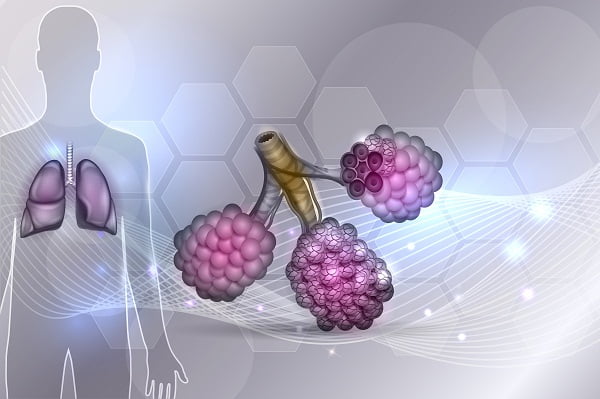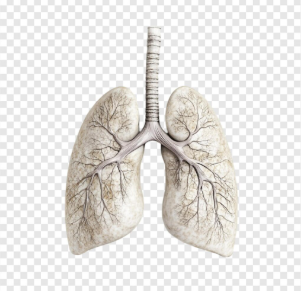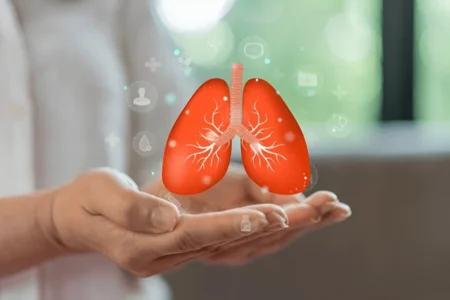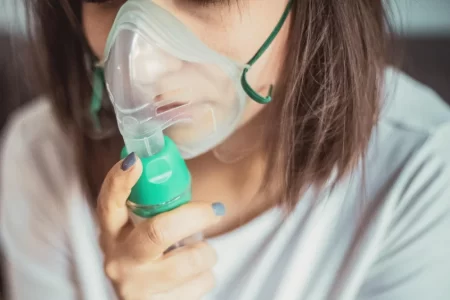
What is Chronic Obstructive Pulmonary Disease (COPD)?
Chronic obstructive pulmonary disease also called as COPD, is a group of progressive lung diseases that limit the airflow into the lungs. The most common among COPD diseases are emphysema and chronic bronchitis. Most of the people with COPD suffer from both of these conditions. Emphysema slowly destroys air sacs in the lungs and interferes with outward air flow. However, bronchitis causes inflammation and narrowing of the bronchial tubes, which results in the building of mucus inside the lungs.
One of the most important causes of COPD is tobacco smoking. Besides this, long-term exposure to chemical irritants can also result in COPD. It is a kind of disease that usually takes a long time to develop. There’s as such no cure for COPD, but the treatment can help in relieving the symptoms, lower the chance of complications, and generally improve the quality of life. If left untreated, COPD can lead to a faster progression of disease, heart problems, and worsening respiratory infections.
Chronic Obstructive Pulmonary Disease (COPD) is actually not one single disease but an umbrella term used to describe chronic lung diseases that cause limitations in the airflow to the lungs. The most common symptoms of COPD are excessive sputum production, breathlessness or a need for air and a chronic cough. However, COPD is not just simply a smoker’s cough, but an under-diagnosed, life-threatening lung disease that may progressively result in death. It has been estimated that almost 30 million people in the United States have COPD and as many as half of the people are unaware that they have it.
According to the latest WHO estimates (2004), currently 64 million people have COPD and 3 million people died of COPD. WHO predicts that COPD will become the third leading cause of death worldwide by 2030.
Chronic obstructive pulmonary disease (COPD) affects millions of Americans and is the third leading cause of death in the United States. Although COPD is a life-threatening disease, the good news is that it is often preventable and treatable.
Symptoms of COPD
COPD symptoms often do not appear until major lung damage has occurred, and they usually worsen with time, particularly if the person undergoes a continuous smoking exposure. In case of chronic bronchitis, the main symptom is a daily cough and sputum production at least three months a year for two successive years. Some of the important signs and symptoms of COPD include:
- Shortness of breath during physical exercises
- Wheezing
- Tightness in the chest
- Excessive mucus in the lungs
- Chronic cough that may produce clear, white, yellow or greenish sputum
- Cyanosis, a condition characterized by blueness of the lips or fingernail beds
- Frequent respiratory infections
- Fatigue
- Unintended weight loss
- Swelling in ankles, feet or legs
Apart from the above mentioned symptoms, COPD patients often experience episodes called as exacerbations, during which their symptoms become worse than usual day-to-day variation and continue for at least several days.
What Causes COPD?
In most of the developed countries like the United States, one of the biggest causes of COPD is cigarette smoking. It has been found that almost 90 % of people having COPD are either smokers or former smokers. Among long-time smokers almost 20 to 30 percent develop COPD while others develop lung conditions or have reduced lung function.
It has been found that most people with COPD are at least 40 years old and have at least some history of smoking. The longer and more tobacco products people smoke, the greater is the risk of developing COPD. In addition to cigarette smoke, cigar smoke, pipe smoke, and second hand smoke can also cause COPD.
The risk of having COPD is even greater if a person has asthma and is a smoker. People can also develop COPD if they are exposed to chemicals and fumes in the workplace. Besides, long-term exposure to air pollution and dust inhalation can also cause COPD.
In addition to tobacco smoking, the major cause of COPD in developing countries is having homes with poor ventilation, due to which the families breathe fumes from burning fuel used for cooking and heating and are at a high risk of developing COPD.
Besides the above mentioned causes, there may be a genetic predisposition to developing COPD. Almost 5 percent of people with COPD have a deficiency in a protein called alpha-1-antitrypsin. This protein deficiency causes the lungs to deteriorate and also can affect the liver. There can be some other associated genetic factors at play as well.
What are the Risk Factors of COPD?
Some of the risk factors for COPD include:
Exposure to Tobacco Smoke
One of the most significant risk factors for COPD is long-term cigarette smoking. The more a person smokes, the greater is his risk of developing COPD.
People With Asthma who Smoke
If people have asthma and are also smokers, the risk of COPD is even more.
Occupational Exposure to Dusts and Chemicals
Long-term exposure to chemical fumes, vapors and dusts in the workplace can irritate and inflame the lungs which in turn increase the risk for COPD.
Exposure to Fumes From Burning Fuel
People living in the developing countries are at a high risk for COPD, due to exposure to fumes from burning fuel for cooking and heating in poorly ventilated homes.
Age
COPD develops very slowly over the years, so most people are at least 40 years old when symptoms appear.
Genetics
An uncommon genetic alpha-1-antitrypsin deficiency has been found as one of the causes of COPD in some people. Some other genetic factors likely make certain smokers more susceptible to this disease.
Diagnosis of Chronic Obstructive Pulmonary Disease (COPD)
As such there is no single diagnostic test for COPD, however a diagnosis of Chronic Obstructive Pulmonary Disease is based on symptoms, a physical exam, and diagnostic test results. A doctor usually diagnoses the disease based on the symptoms. While visiting a doctor, you should mention all the symptoms and inform the doctor if:
- They are smokers or have smoked in the past
- They are exposed to lung irritants in their workplace
- They are exposed to a lot of secondhand smoke
- They have a family history of COPD
- They have asthma or other respiratory conditions
Based on this information, the doctor may recommend some other tests to get a complete picture. These tests include:
Spirometry
It is a non-invasive test to evaluate lung function. During the test, a person is asked to take a deep breath and then blow into a tube connected to the spirometer.
Imaging Tests
Some imaging tests like a chest X-ray or CT scan can be performed to check the lung function. These imaging tests give a detailed look of patient’s lungs, blood vessels, and heart.
Arterial Blood Gas Test
This test involves taking a blood sample from an artery to measure the blood oxygen, carbon dioxide, and some other important levels.
All these tests can help in determining if a person has COPD or some other conditions such as asthma or heart failure.
Treatment of COPD
Till now COPD doesn’t have a cure, but the available treatments can help a patient in living a better life. Having COPD does not mean that a person cannot lead a full life. But with the right medication, proper diet and lifestyle modifications, a person can achieve a good control over symptoms and live good quality of life. There are many treatment options for COPD which can help in slowing the progression of the disease and therefore a patient can live a normal life. Some of the treatment options include:
- Stopping smoking
- Inhalers and medications
- Pulmonary rehabilitation surgery
Stop Smoking
If the patient is a smoker, stopping smoking is the most effective way to prevent COPD from getting worse. Quitting smoking cannot reverse the damage caused to the lungs and airways, but it can help in preventing any further damage. This is the most effective treatment that’s needed in the early stages of COPD, but it’s never too late to stop because people with more advanced COPD have been benefitted from quitting smoking.
Inhalers
Patients having breathing problems because of smoking are usually given inhalers for getting relief. Inhaler is a device that delivers medication directly into the lungs while breathing in. There are different types of inhalers used in COPD. The main types of inhalers include:
- Short-acting bronchodilator inhalers are the first treatment options used in most cases of COPD
- Bronchodilators are medications used in the COPD treatment that make breathing easier by relaxing and widening the airways
There are usually two types of short-acting bronchodilator inhaler:
- Beta-2 agonist inhalers like salbutamol and terbutaline
- Antimuscarinic inhalers like ipratropium
Short-acting inhalers are used when a person feels breathless, and is mostly used up to a maximum of four times a day.
Long-acting bronchodilator inhalers on the other hand are used if a person experience symptoms everyday throughout the day. Long acting bronchodilators are generally used once or twice in a day because the dose lasts for at least 12 hours. Long acting bronchodilators have also two types:
- Beta-2 agonist inhalers like salmeterol, formoterol and indacaterol
- Antimuscarinic inhalers like tiotropium, glycopyronium and aclidinium
Besides these inhalers, there are some other inhalers which contain a combination of both long-acting beta-2 agonist and antimuscarinic inhalers.
Sometimes patients still feel breathless and undergo flare-ups (exacerbations) even after taking the long-acting inhalers. In such people, steroid inhalers are recommended. Steroid inhalers contain corticosteroid medication, which helps in reducing the inflammation of airways. Mostly, steroid inhalers are used as a part of a combination inhaler that also includes one of the long-acting medications mentioned above.
Medication for COPD
When the symptoms aren’t controlled with inhalers, doctors may recommend some medications like tablets or capsules. Some of the main medications used for COPD treatment are:
Theophylline tablets – These tablets open and relax the airways and are generally taken twice in a day. While taking this medicine, patients are supposed to have regular blood tests for checking the level of medication in the blood. There are some side effects of this medicine:
- Sick feeling
- Headaches
- Difficulty in sleeping (insomnia)
- Irregular heartbeats (palpitations)
Mucolytic tablets or capsules – These medications are given to patients with persistent cough and excessive thick phlegm e.g., carbocisteine. Mucolytic medications make the phlegm thinner and easier to cough up.
Steroid tablets – These medicines are given to patients with bad flare-up and therefore help in reducing the inflammation in airways. However, prolonged use of these medicines may cause some side effects like:
- Weight gain
- Mood swings
- Osteoporosis (weakened bones)
Antibiotics – Antibiotics are given to patients with chest infection, if they have:
- Cough with yellow or green phlegm
- High body temperature (fever)
- Rapid heartbeat
- Chest pain or tightness
- Feeling confused and disorientated
Pulmonary Rehabilitation
Pulmonary rehabilitation is a specialized programme of exercise and education planned to help people with several lung problems including COPD. Pulmonary rehabilitation programmes usually involve two or more than two group sessions in a week for at least six weeks. It is meant to help people with lung problems and help patients in managing their symptoms, self-confidence and for overall emotional well-being.
Usually the programme includes:
- Physical exercise training tailored to patients needs and ability like walking, cycling and strength exercises
- Educating the patient and his/ her family about the condition
- Dietary advice
- Psychological and emotional support
The pulmonary rehabilitation programmes are generally provided by a number of different healthcare professionals like physiotherapists, nurse specialists and dietitians.
Other Treatments of COPD
Patients with severe symptoms often experience bad flare-ups and therefore may sometimes need additional treatment like:
- Nebulised medication – Is given to patients with severe COPD in which the inhalers don’t work
- Long-term oxygen therapy – Is given to patients with low oxygen levels in the blood because of COPD. This can be given at home through nasal tubes or a mask. This helps in maintaining the level of oxygen in COPD patients but it’s not a treatment for the main symptoms of COPD like breathlessness.
- Ambulatory oxygen therapy – This is given to patients who have normal oxygen levels while in rest but the oxygen levels fail while doing strenuous exercises like too much walking
- Non-invasive ventilation (NIV) – Is given to patients when they have a bad flare-up. It is used to support the lungs and make breathing easier.
- Surgery – Is suitable for only a small number of people with severe COPD whose symptoms aren’t controlled with medicines. Three types of surgeries can be done:
- Bullectomy – It is an operation to remove a pocket of air from one of the lungs, and therefore helps the lungs to work better and make breathing more comfortable
- Lung volume reduction surgery – It is an operation to remove a badly damaged section of lung so as to allow the healthier parts to work better and make breathing more comfortable
- Lung transplant – It is an operation to remove and replace a damaged lung with a healthy lung from a donor.






